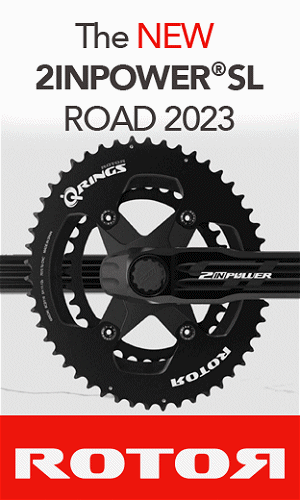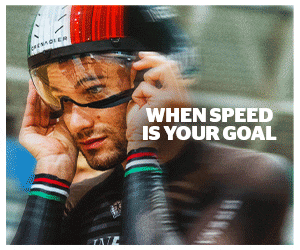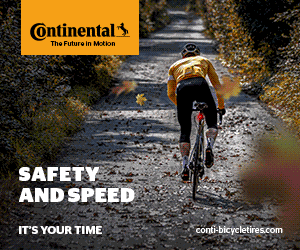
VeloUK’s Larry Hickmott feature on a photographer with over 40 years of covering the Tour de France, John Pierce
John Pierce: Good pictures can be planned. Great pictures just happen.
Great photo … 1981 Tour and Yellow jersey Bernard Hinault sprinting with the greats of that time.
With thanks to John Pierce, Jim Fryer, Iri Creco and Chris Rhymer/PhotoSport International UK USA Asia
FEATURE
A look through some of John’s work at Prendas Ciclismo (calendars) not only shows the quality of his photos but also just how long John has been shooting the stars of the cycling world. John has been kind enough to help VeloUK with pictures from this years Tour de France which you will find on this page and he has also shared with us some memories and opinion on the 2011 edition.
Calendar’s from Prendas
2010Â Â http://www.prendas.co.uk/details.asp?ID=2564
2011Â Â http://www.prendas.co.uk/details.asp?ID=2780
Before that though, every photographer will have memorable images and for John, one such memory was Stage 2 in the Tour of France which was being held in the Republic of Ireland. Boardman had won the prologue and held the jersey on stage 1 and on stage 2 until the crash. “I was passing the peloton, almost at the front, when I saw a rider twist and shoot off to the left. We arrived seconds later with several other motorcycles.â€
“A couple of photographers made it to the fallen rider before me. As the peloton was swarming around me and I had to cross the road – our bike had to be parked for me to take photos. Anyway, when I arrived, the three or so other photographers all took a step back to let me in for an overhead shot. Of course it was Boardman, a British guy – that is respect and appreciation of your fellow worker. I will never forget that…
Chris Boardman crashing out of the Tour of France 1998 in Ireland. Credit John Pierce/PhotoSport International UK USA Asia
Photo Album 1 from 2011 Tour de France – Cavendish (another below)
[nggallery id=9]
Special thanks to Jim Fryer and Iri Greco PhotoSport International at the 2011 Tour
One of my questions to John was to ask for favourite moments in the race. His reply was:
1. The Team Time Trial which I think is an unusually high quality photo from me. It took some time to find the right place, which in my minds eye was exactly as it looks on ‘film’ Then the exposure was nothing like I have ever done before – extremely high ISO and shutter with high speed flash. This picture is one of my favourites, unusual in itself for me.
2. The Cavendish sprint win at Cap Frehel. The finish was a long ways up hill, not a mountain, but a long way uphill – and then a sweeping very fast roller coaster descent before another climb to the finish. I thought this was a finish for Philippe Gilbert, the World Number 1.
Cavendish though shot through like a rocket and the photo on the line is a major sprint pic without Cavs display of bunny-hop, telephoning or whatever else – this was a battle and he still won.
Cav, pre Green jersey, winning in the Tour de France. Credit John Pierce/PhotoSport International UK USA Asia
“Outside of that, the favourite thing was watching my American friend Tom Danielson achieve some of his potential. He finished 9th but rode within himself. Now the target has to be higher and more aggressive, when a podium place would be possible. After winning Tour de Langkawi in 2003, he has never really had opportunity in the big theatre of cycling. That changed this year, riding his first Tour de France.
Another favourite moment was watching on TV the crossing of the Casse Desert on the Col l’Izoard, surely the most iconic scenic view of the Tour de France. Another favourite moment, the arrival in Paris at the end of another Tour and everyone is well, safe to return to their loved ones and families.
John’s other memories include the amazing lapse of power from Andy Schleck in the Time Trial where he lost so much time to Cadel Evans and handed the Tour victory to the Australian after having lead him by almost a minute before that race.
“You know†says John, “last year it was even between him (Schleck) and Contador – very close until the last kilometre. But this year, Contador is not so good, yet he finished 3rd – so I would have expected Andy Schleck to have been placed about the same or better – but he was way way way down. Strangeâ€.
“My only explanation is that BMC cleverly wore him out in the two preceding days. They were very clever in this race to make Andy Schleck tired before the TT – it was a strong and dangerous bluff, one that Contador almost lost last year – but this year Andy had no legs left for the TT.â€
Tom Danielson. Credit John Pierce/PhotoSport International UK USA Asia
Jim Ochowicz
John also came up with some gems like the fact that Cadel’s Evans team management/owners are Jim Ochowicz – the same as Motorola, the same as US Postal and the Discovery Channel team. Before even that, the 7 ELEVEN Team formed with Eric Heiden in 1984/85. That first Tour de France was 25 years ago and they took the Yellow Jersey on Day One… Some record for a team owner!
As expected from anyone who has been covering a race for 40 years plus, John has seen many changes over the years at the Tour, jerseys have come and gone and returned – remember the Combine jersey?
John says of the Points jersey “I think that the organization has inadvertently done away with the Points Jersey. It’s no longer a Points jersey – but a Sprinter jersey only. No one else can win this – therefore it is no longer a Points Jersey.â€
“ASO should introduce a Red Sprints Jersey as they used to which would include the mid race sprints and the finishes – The Points jersey, second only to the Yellow should stay as a Points Jersey given only for points at stage finishes.â€
[nggallery id=10]
Special thanks to Jim Fryer and Iri Greco PhotoSport International at the 2011 Tour
Another observation by John was the manner of the solo attack by Andy Schleck in 2011 was exactly the same as the ride done by Floyd Landis, same stage, same part of the Tour and the same distance. (Morzine 2005?). “It was very very strange that NO ONE even attempted to go after Schleck - not one single rider – not even Voeckler. Like it was arranged.â€
“One other point I have not cleared up – on stage one there was a big crash at 9.5 kms and Contador – Sanchez were chasing at 41 second. Then they crashed again inside the last 4km. The reason the crash and the Wiggins crash occured is because the main peloton did not race until 40km to go when HTC started riding for the final… so then everyone wants to be at the front in case there is a split and what do you get when 180 riders on a 20ft road… crash after crash.â€
“If the teams had upped the tempo a little before at say 60 km to go ( 36 miles) the peloton would be stretched a bit and the crashes would not happen. How many riders from HTC and from BMC have crashed?
Master & Commander: George Hincapie and Cadel Evans in Paris. Credit John Pierce/PhotoSport International UK USA Asia
Photography at the Tour
As a photographer who has covered all the Tours of Britain for the last eight years, I was intrigued what it was like for a shooter on the Tour de France. Who better to ask but some one who has had 40 years plus of doing just that. Here is what John says can be a typical day …
The Tour stages normally get underway around 11.30 to 12.30 depending on the length of the stage. This is because the Tour wants to finish at prime time television – approx 17 to 17.30hrs. The other reason is the pure logistics of getting everyone to the start and set up on the road. The Village Depart hosting both national and local sponsors with regional produce – VIP’s from the city and sponsors companies have two and a half hours in the village whilst the publicity caravan is setting off.
At the same time the press media vehicles are parking up in their respective places, avant (in front) or derriere (behind) or ‘Hors Course’ (off race route). Parking is very specific – just imagine if 400 plus vehicles all left at the same time!
Press Motorcycles park in front of the start line. Everything has to approach the start from the same point of reference behind the start known as the PPO (point passage obligatory). Just to give an example, the two stations, France 2 (FR2) and France 3 (FR3) hold the domestic rights and provide pictures for broadcasters around the world.
These stations use a staff of 300 with four helicopters, two aircraft, two motorcycles, 35 other vehicles including trucks and 20 podium cameras. We have one motorcycle and one car in the race and one car ‘off race’.
So the day will start normally for breakfast. The departure from the hotel depends on the distance the hotel is from the at actual start. In the mountains, hotels are scarce and also the roads maybe two miles apart as the crow flies, but could be across the valley and up another mountain. The publicity caravan will depart about 2 hours before the race start, so arrival at the start before they leave speeds things up. However, in most cases, they have to get the Caravan out, before they can get the press cars in to the start area.
About twenty-five minutes before race call ( depart fictive) a bell is rung calling all people to their cars. Just after this, the riders line up, the top riders always come late as they are always placed near to the front of the ‘grid’. Last shots are taken and the photo motos pull away. 11.30am on a long mountain stage.
Bernard Eisel (left) and David Millar (right) – Credit John Pierce/PhotoSport International UK USA Asia
There are 90 x motorcycles on the Tour. Photo bikes number currently 16 in the race and 5 outside race. This will be changed in 2012 reducing the number to a maximum of 16 due to the accident involving Sorensen.
I usually work the race from the front, meaning that when a break goes I stop shoot that and avoid the massive peloton from passing me until later in the stage when it will be more elongated or strung out. It is possible to stop for drinks when on the moto, but it is rare.
There are few periods when the situation in the race is vacant, due to the restrictions on passing- closed areas being feed zones, sprints, kom and when there is a break forming. Shooting would include sign in, rider assembly, the first break, scenic of the main peloton, individual riders in the break, the finish, after race portraits, podiums.
In the mountains, there is more chance, with stops near the summit of a mid stage climb, adding more opportunity of individual race shots and scenics.
4.30pm
With 25km remaining on a flat run in to the finish, most motos leave the race – that will take you 15 mins, it will take the riders 25 mins. The stage finishes, if it’s a flat stage, the riders will be in all together or maybe two groups.
On a mountain stage it can take 20 minutes or more for the autobus to arrive. By now the time is 5.20pm or later. The podiums are conducted after all the main jersey wearers have finished the stage. So it is about an hour until that is completed, usually being about 6pm.
Andy Schleck on the Galibier. Credit John Pierce/PhotoSport International UK USA Asia
5.45pm
The photo moto would have waited beyond the finish, to take me to the press room. This can be very close and consequently difficult to find or up to 5 or 9kms away – when following, the signage makes it easier to find. Here we await the other members of our PhotoSport media group, they could be already there or stuck in traffic.
7.00pm
The next objective is to obtain the computer from our press car, download the days images from the cameras, while other members of the group head for refreshments. There is a need to collect the results sheets, edit and send the stage finish image, new leaders jersey, any British or American interest images.
8.00Â – 8.30pm
After about an hour or more at the Salle de Presse, we would depart for the hotel. This van be very traumatic in the mountains with the roads open to the public, all departing the course retracing back down the mountain.  Arrival at the hotel, booked and paid for by ourselves, is usually on the cut off time for evening meals. In the mountains, it is best to have a hotel that has a late reception desk as delays are to be expected and distances take much longer to travel on mountain roads.
Frank Schleck and Cadel Evans on Alpe d’ Heuz. Credit John Pierce/PhotoSport International UK USA Asia
9.30 – 10pm
Arrival at hotel, unload car – quick wash and dinner. After dinner it’s shower time and the charging of all equipment for the next day. Flash units, cameras, race radio batteries and mobile. Exchange the day’s race sheet, carried on the moto so that the stage details are available en route. Washing of clothing is only done when two or more nights are spent in the same hotel.
The car is always left empty as break ins are frequent at le Tour because all personnel have computers, cameras, wallets, air tickets and so on – Tour cars are prime targets. They can often be removed from legitimate car parks should there be a market the next day!
11.30pm – 02.30am
As for editing and captioning images from the stage, this can be done for specific requests, or riders like shall we say Sky or Cavendish, but that is burning the midnight oil and it is normal to hit the sheets at about 2.30am
Le Tour, 1967 – Raymond Poulidor (right) and Roger Pingeon, winner of the Tour in 1967. Credit John Pierce/PhotoSport International UK USA Asia
From Film to Digital – is life easier or more stressful VeloUK asks John
Technology is great when it works. Lets ask the question, for whom is it great? Where does the photographer gain anything?
There is no film to buy or to process – great, but having said that photographers bought films that had a colour base and film speed for different applications.
Now, everything is digital and everyone has pretty much the same generic colours. A good photographer has to work on pictures to make them look like they were taken on film. All the highlights are burnt out, yellows have to be created, blacks are never black.
It’s wonderful to use ‘another memory card’ but digital is fragile, time consuming and has no archival database. A sheet of 24 x transparencies is reality, digital is not. DVD’s lose their colour rendition after four years, who knows how long they will last on a hard drive, and if the hard drive will work when you plug it in.
Computers have to be carried by photographers on all races, if not, where can they put the daily shoot of images. What if the computer is damaged, lost, stolen or just crashes. All that is very expensive, extremely expensive.
Further, in the days of film, magazines sent transparencies to ‘reproduction houses’ where they were scanned and edited for use. Now all this work has to be done by the photographer, but not just on the images that will be used – on all the images he (or she) chooses to send out.
Furthermore, file info has to be added, a caption and a sticker is no longer enough. Keywords, Date, Location, Subject, Headline, Source and Copyright all has to be added to each image. No one pays for this huge amount of work, with almost all photographers working long hours into the night, every night editing and sending images.
Then there is the delivery of images – fantastic that it can be transmitted to many locations around the world in a matter of minutes. No one pays for that service, it is taken for granted, if the image arrives during the next days racing it is already out of date and obsolete. Then the sender is regarded as a nuisance, because that news has been broadcast around the world, probably before you reach the press room.
Finally, the respect for photographers is diminishing faster than the industry itself.




























